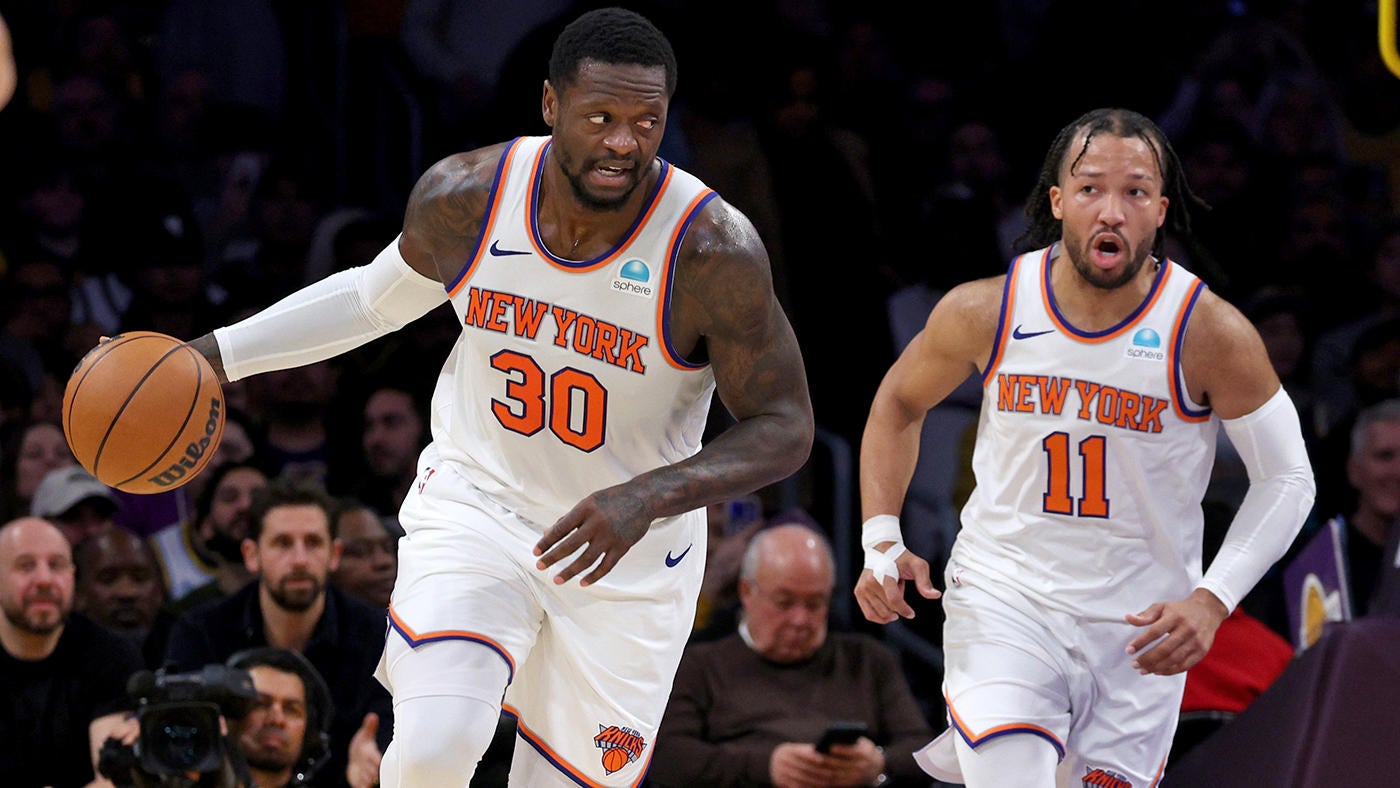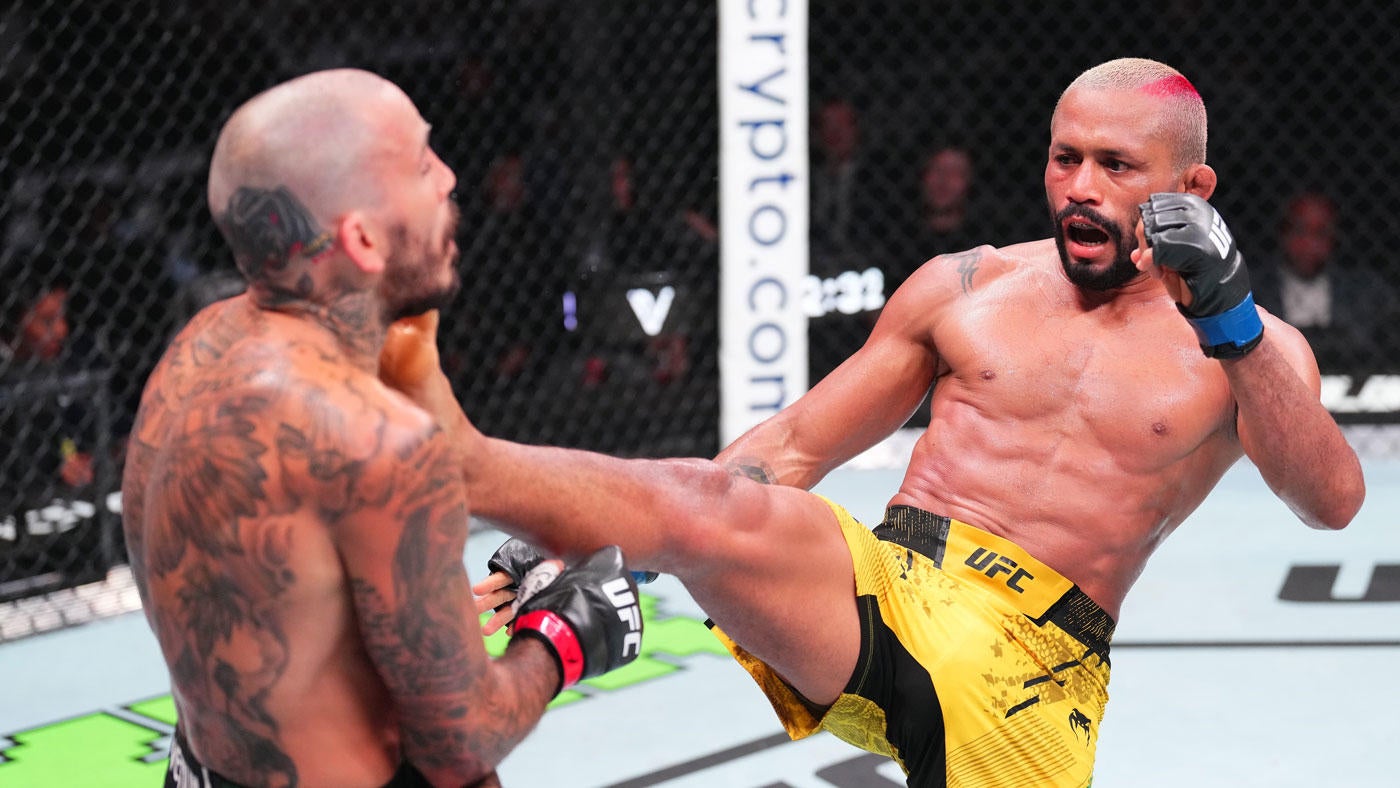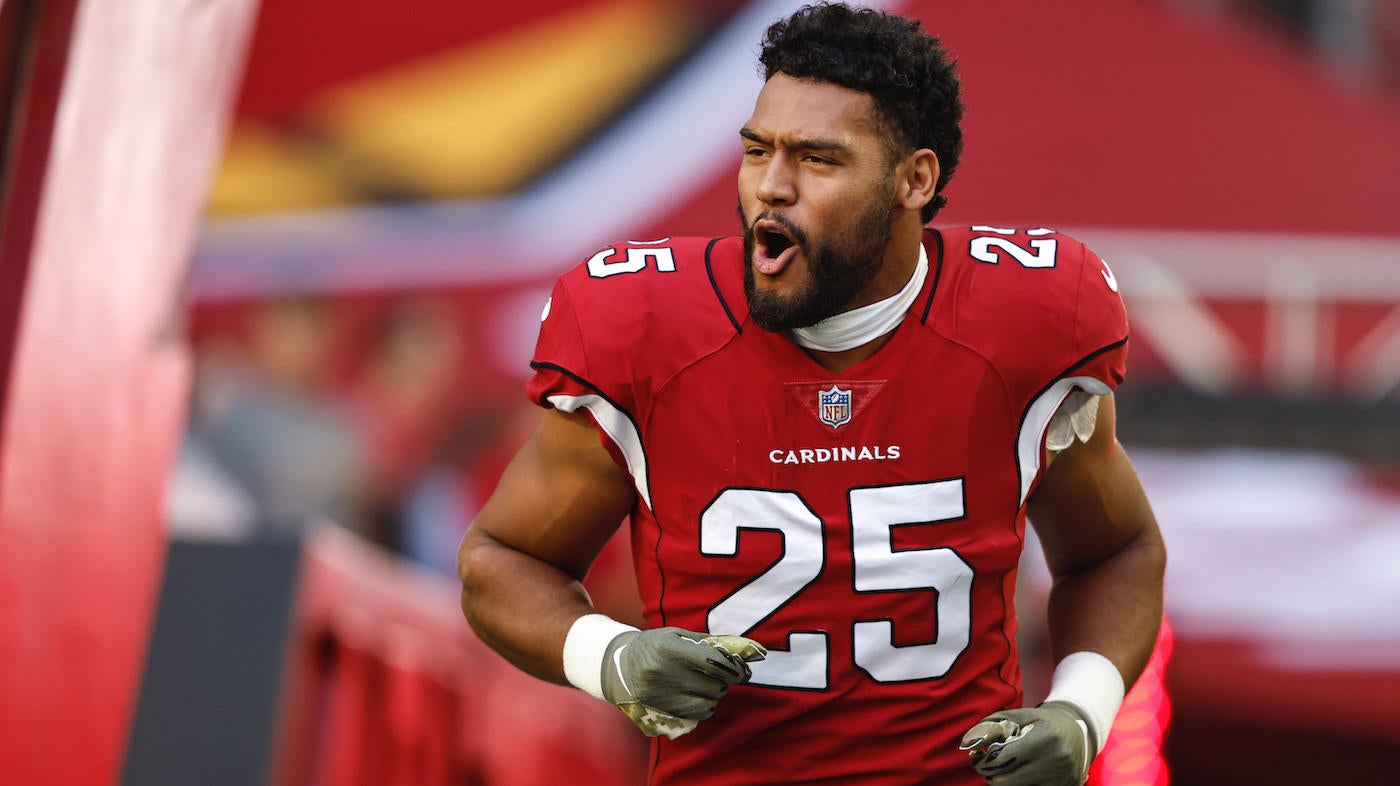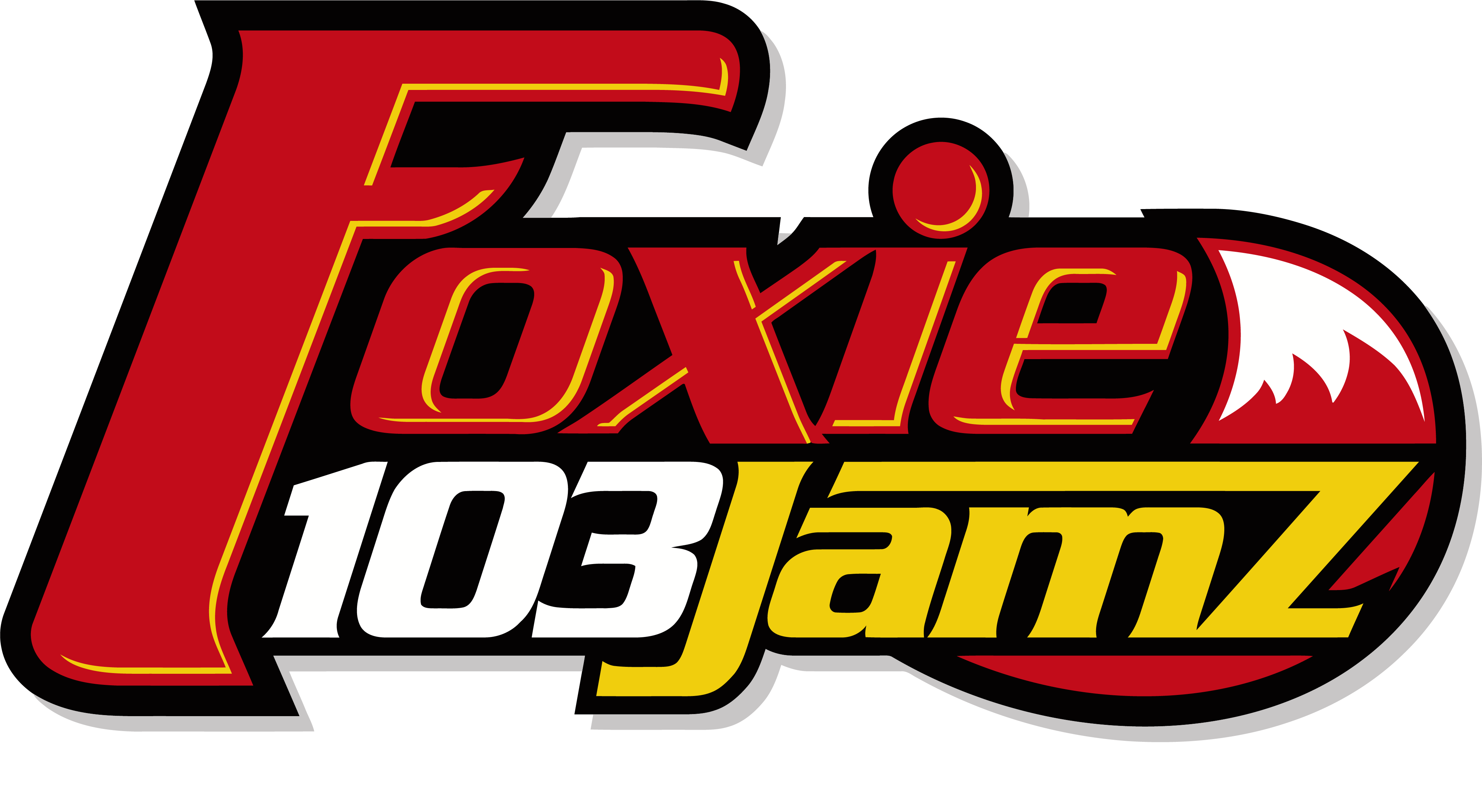Knicks’ Julius Randle set to become extension-eligible, but negotiations won’t be easy like Jalen Brunson deal
Written by CBS SPORTS ALL RIGHTS RESERVED on August 4, 2024

Julius Randle becomes eligible to sign a contract extension with the New York Knicks on Saturday, and the number he can sign for looks simultaneously too high and too low in the broader context of his team’s offseason. Based on the league’s veteran extension rules, Randle is eligible for a 40% raise in the first year of a new deal and 8% raises in all subsequent seasons. Such a deal would make an extension worth $181.5 million. Add in the $30.3 million he will make this season and he would be set to earn $211.8 million over the next five seasons.
On the “too high” end of the equation: Jalen Brunson just extended for only $156.5 million over four years. Jalen Brunson is a much better player than Julius Randle. On the “too low” end of the equation: OG Anunoby just re-signed for $212.5 million over five years, more than Randle would make over the same time period. Randle is a three-time All-Star and two-time All-NBA player. Anunoby, for all of his virtues, is, at the very least, less accomplished on an individual level than Randle is.
In short, placing a fair value on Randle, even within the context of the Knicks, is difficult. Doing so within the league as a whole? That’s a good deal harder. There was a time in league history in which a player with Randle’s resume was an automatic max. As we’ve learned with Brandon Ingram this offseason, that time is gone. The second apron killed it. The sub-superstar shot-creator is one of the player archetypes hit hardest by the new collective bargaining agreement. Nobody wants to get stuck holding the bag on the next Zach LaVine contract.
Randle is not LaVine. He’s much more than a bucket. He’s an all-around shot-creator who has grown leaps and bounds as a passer in New York and unlocks a bully-ball style that figures to be pretty effective against certain specific opponents. If the Celtics even have a weakness, it’s probably their lack of bulk. New York’s best chance at unseating Boston probably starts with Randle and Mitchell Robinson spending seven games muscling Kristaps Porzingis out of the paint. There’s something to be said for a modern power forward that at least partially checks the “stretch-4” spacing box without sacrificing the old-school traits that were once prized at that position.
Of course, if Randle married those skills perfectly, his salary wouldn’t be up for debate. He’s not LaVine, but he’s not LeBron James either. His on-ball work is messy. He settles for bad jumpers. He turns the ball over. He’s the sort of creator that’s great at soaking up possessions but not as adept at maximizing them. Run everything through him and he’ll keep you afloat. The Knicks obviously don’t need to run everything through him anymore. That’s what Brunson is for. But if you don’t need quite as many innings to be eaten and you’re not getting the sort of efficiency bump you’d hope for out of a pecking order drop, what exactly are you getting out of Randle that justifies a $45 million per year extension?
Well… we don’t know quite yet. On the surface, Randle looks like a player whose value dips as his roster improves. He’s settled in as roughly a 35% catch-and-shooter on 3-pointers. That’s… fine. He’s never been an especially strong screening weapon in the pick-and-roll, preferring to create his shots on the ball and lacking the sort of obvious weapon (Mitchell Robinson’s verticality, Isaiah Hartenstein’s floater) that have made New York’s centers so dangerous in that play. His defense is inconsistent, and New York’s utter refusal to use him as a backup center so far becomes much more significant with Hartenstein gone. On-ball power forwards that aren’t great defenders or catch-and-shoot weapons become less valuable the less they get the ball.
The Knicks can still give him the ball plenty. They don’t necessarily need to. Mikal Bridges was underqualified to lead Brooklyn’s offense. He was also overqualified as a glorified role player in Phoenix. There’s a world in which he, not Randle, emerges as Brunson’s sidekick and New York’s secondary creator. Donte DiVincenzo can dribble. Deuce McBride wants to dribble. These aren’t the 2021 Knicks anymore. They don’t need Randle to do everything.
And if Randle isn’t doing everything, justifying a $181.5 million extension becomes much harder to justify. That’s especially true in light of this team’s overall finances. Right now, the Knicks have nine players under contract for the 2025-26 season and roughly $53.3 million in second apron room. Re-sign Randle at his max and you’re immediately down to around $10 million in second apron space. That’s barely enough to fill out a roster, much less pay the Hartenstein replacement the Knicks are going to need to find at some point. Things get even tighter during the 2026-27 campaign, when Bridges starts whatever his next deal is and Robinson will either need to be re-signed or replaced.
It’s very, very hard in second apron world to pay four players a lot of money. Brunson, for all of the money he left on the table, is still earning a lot of money. Bridges isn’t quite there yet. Even if he takes a discount, he’ll join Brunson in the “very well-paid even below the max” club. There are a lot of role-player mouths to feed. Josh Hart isn’t going anywhere. Neither is DiVincenzo. Someone is going to be playing center for the Knicks and getting well compensated for it throughout this run. Anunoby is earning more than all of them.
Anunoby is an instructive comparison here, considering where the league is going. He’s not as accomplished as Randle but he’s a far smoother fit. He provides value no matter how much or how little he gets the ball. He’s perhaps the NBA’s best wing defender and he’s versatile enough to guard point guards and centers. Defenses will always guard him from deep. He’s no playmaker, but he makes the simple passes and can punish a closeout. He fits on any roster. So does Bridges. There’s a reason the entire league chased both of them on the trade market.
Randle might fit on this, specific Knicks team. Only time will tell, but there’s a version of this season in which this roster is absolutely perfect for him. Make him the secondary creator. Stagger him and Brunson to maximize his on-ball reps. Ensure Bridges and Anunoby are taking the easiest possible shots by limiting their own creation burdens. There is also a version of this season in which he bumps against the new Villanova quartet and his shot-creation means less within the totality of this roster. What happens the first time Tom Thibodeau decides he needs Josh Hart’s defense to close a game over Randle’s offense?
If Bridges or Anunoby were ever deemed superfluous, finding them a new home would be easy. It’s not as simple for Randle. The good teams all have better creators than Randle. The bad ones mostly aren’t interested in paying someone a lot of money to hurt their draft picks and take shots away from their youngsters. Keith Smith projects only five teams with even $20 million in cap space next summer, and that number drops to four if Lauri Markkanen extends in Utah. It’s Brooklyn, Houston, Washington and San Antonio. Do any of those teams seem like they’re desperate to pay a sub-superstar shot creator? Short of a sign-and-trade, there’s no obvious place for Randle to go (yet).
This makes a resolution of some sort, either now or down the line, the likeliest outcome. New York is Randle’s best path to getting paid. The Knicks are an above-the-cap team now. It makes no sense for them to willingly relinquish the Randle salary slot even if, in time, his fit proves clunky enough for them to decide they’d rather fit another player into it. All of this reinforces the need to re-sign Randle at a salary that would be palatable in potential future trades. That number is not $181.5 million. Jarrett Allen just extended at $91 million over three years, for instance. Something in that range of annual average value, even if it’s for the full four years, feels appropriate. Jerami Grant is on a $32 million per year with four years left to play for a bad team. Randle getting something similar to play for a very desirable one is probably the right ballpark. It represents (and would certainly be publicly billed as) the sort of discount Brunson took. In truth, it’s just not clear where, right now, Randle can even get more.
Randle could play out the year if he wants to. There’s an inherent risk in that approach. If he turns out not to fit with this iteration of the Knicks, he could get dealt at the deadline before ever signing a new deal. He could flame out in the playoffs (and his track record is not encouraging) and find himself entering a barren free-agent market without suitors. But if Randle’s risk tolerance is high enough, there’s a real reward to that approach. As a free agent next summer, he’s eligible for far more than he is now—a staggering $313.9 million over five years. It’s hard to imagine any universe in which he gets that, but say the Knicks win the championship. Suddenly he’s negotiating with far more leverage against a far higher ceiling. As promising as the Knicks look, though, a championship is unlikely for any team. Given Randle’s shortcomings, it probably isn’t a wise bet.
But if he feels an offer far below that $181.5 million max he’s eligible for on Saturday doesn’t accurately reflect his worth, then, well, that might be the bet he has to make. The Knicks didn’t talk Brunson into a discount purely for the sake of blowing those savings on Randle. The idea here is going to be to keep an entire core together. That core definitely consists of the Villanova players. It contractually has to include Anunoby. It’s either going to include Robinson or another center, perhaps (and, given Robinson’s health concerns, probably likely) both. There is a number within that framework that Randle can fit within. It isn’t his max.
That doesn’t mean the two sides necessarily need to find it on Saturday. Maybe Randle will prove himself with this group during the season. Maybe he doesn’t, and he’s traded for the long-term Hartenstein replacement, along with a cheaper forward to fill some of his old minutes. He’s the uncertainty within this group, the swing piece that gives them championship-level scoring upside but the salary that might become too unwieldy to sustain. Balancing the context of this roster and cap sheet with Randle’s on-paper accomplishments is going to be the most complicated negotiation this Knicks front office has ever engaged in. They’ve gotten almost everything right so far. This is perhaps the most important test they have left to face in building a champion.
The post Knicks’ Julius Randle set to become extension-eligible, but negotiations won’t be easy like Jalen Brunson deal first appeared on OKC Sports Radio.





